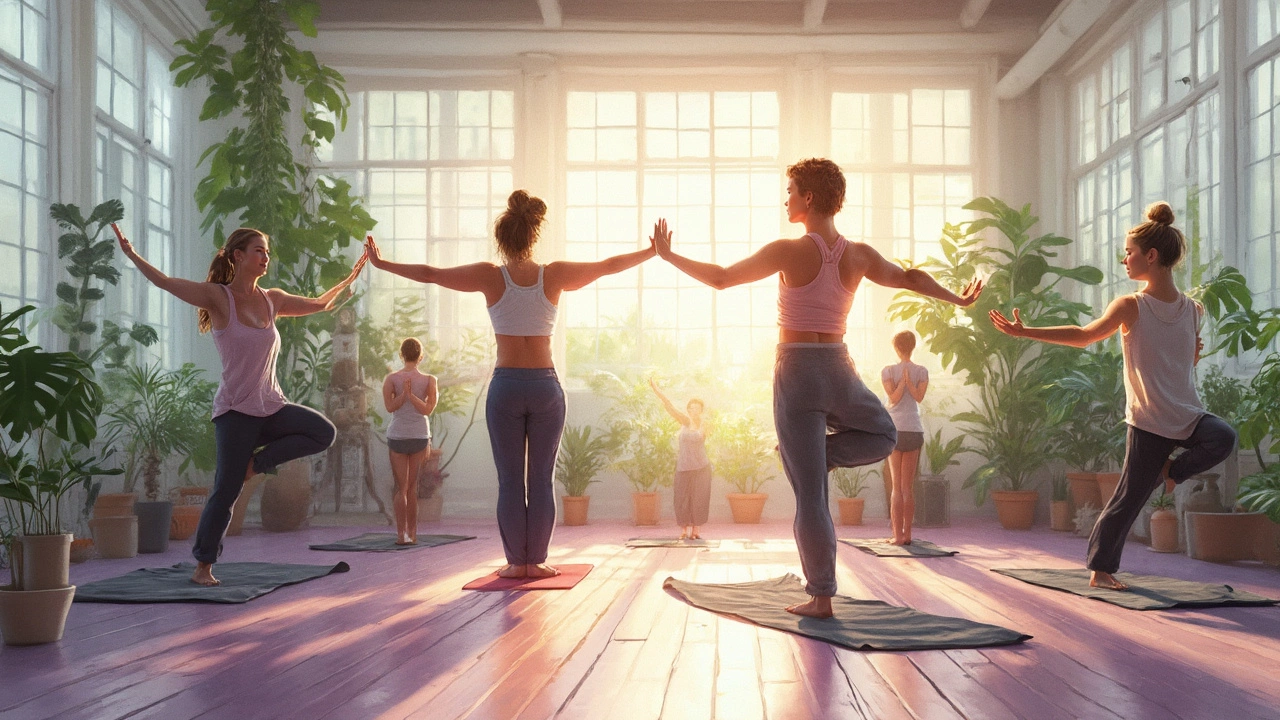
Beginner Yoga Tips – Easy Steps to Start Your Practice Today
If you’ve never rolled out a mat, yoga can feel intimidating, but it doesn’t have to be. A few simple habits can turn a confusing routine into a calming habit you look forward to. Below are the most useful tips to make your first weeks smooth and enjoyable.
Set Up a Simple Space
All you really need is a quiet corner, a yoga mat, and a little room to stretch your arms overhead. Clear away clutter so you can focus on your breath, not the coffee mug. If the floor is cold, a thin blanket or towel underneath the mat adds comfort without changing the pose mechanics.
Learn a Few Core Poses
Start with three foundational poses: Mountain Pose (Tadasana), Downward‑Facing Dog, and Child’s Pose. Mountain Pose teaches alignment and balance; simply stand tall, feet hip‑width apart, shoulders relaxed, and feel the ground through your feet. Downward‑Facing Dog stretches the hamstrings and shoulders while giving you a gentle inversion. Child’s Pose provides a safe place to rest and reset your breath.
Practice each pose for three to five breaths. Focus on the inhale‑exhale rhythm: inhale to lengthen, exhale to soften. This simple breathing pattern trains your mind to stay present and reduces the urge to rush through the sequence.
Use Props, Not Excuses
A yoga block or a sturdy book can bring the floor closer when your hands can’t reach it in Downward‑Facing Dog. A strap (or a belt) helps you keep proper alignment in seated forward bends. Props aren’t cheat codes; they are tools that keep you safe while your flexibility builds.
Keep Sessions Short and Consistent
Ten minutes a day beats an hour once a month. Set a realistic schedule—maybe a 10‑minute morning flow or a 15‑minute evening wind‑down. Consistency trains muscle memory and makes it easier to notice progress, like a deeper breath or a steadier balance.
Listen to Your Body
Yoga isn’t about forcing yourself into a shape. If a stretch feels sharp or painful, ease out of it. Gentle discomfort is normal as muscles lengthen, but sharp pain signals you’re overdoing it. Adjust the pose, use a prop, or skip that move until you feel ready.
End with a Moment of Stillness
Finish every practice with a minute of seated or lying still. Close your eyes, return to natural breathing, and notice how you feel. This short pause seals the benefits of your session and trains the brain to associate yoga with calm.
By following these beginner yoga tips—setting up a clean space, mastering a few core poses, using props, staying consistent, listening to your body, and ending with stillness—you’ll build a solid foundation. The journey is personal, so move at your own pace and enjoy each small improvement. Happy stretching!"
